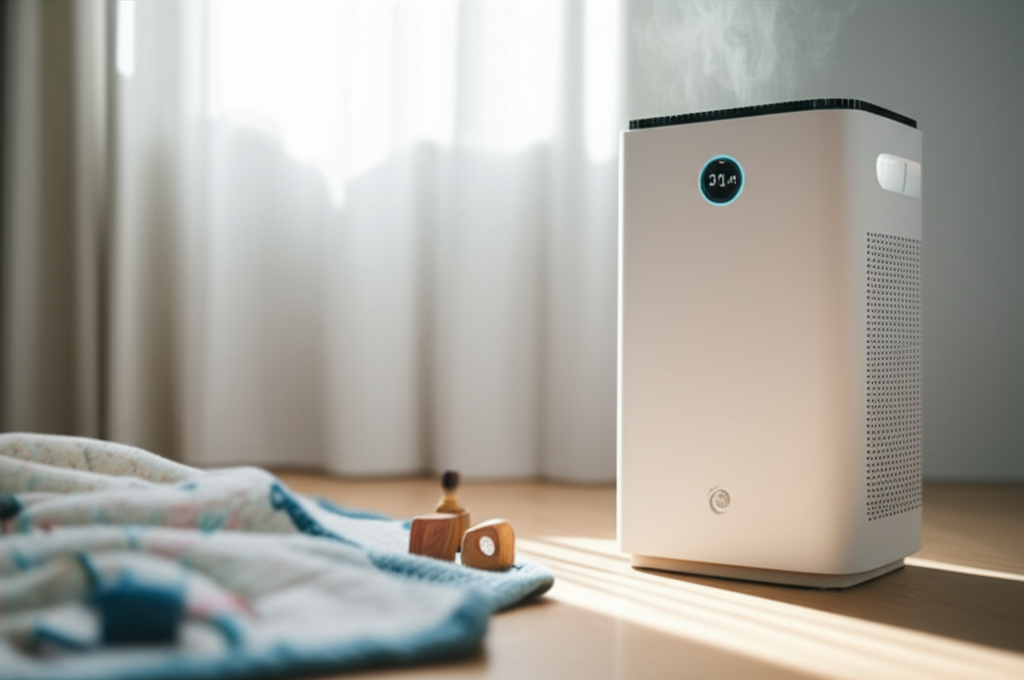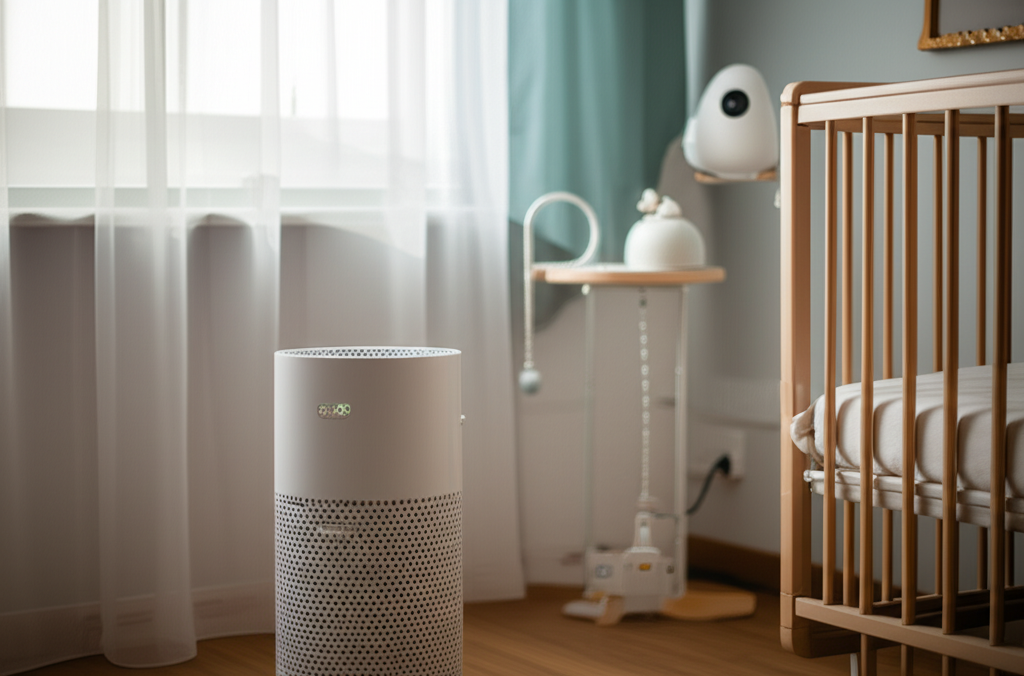Yes, air purifiers can be very good for infants, offering essential protection against airborne pollutants that can harm their developing respiratory systems. They help create a cleaner, healthier breathing environment in nurseries and homes, reducing exposure to allergens, dust, and other irritants.
Air purifiers for infants are a growing concern for many new parents. You want the absolute best for your little one, and that includes the air they breathe. It’s completely understandable to wonder if adding another device to your nursery is truly beneficial or just another gadget. The good news is that when chosen and used correctly, air purifiers can play a significant role in safeguarding your infant’s health. Let’s explore how they work and why they might be an essential part of your baby’s protective environment.
Why Indoor Air Quality Matters for Infants
Indoor air can be surprisingly polluted, often more so than outdoor air. For infants, whose lungs are still developing and immune systems are immature, these pollutants pose a greater risk. They are more susceptible to the effects of allergens, viruses, and volatile organic compounds (VOCs) that can be present in any home. Creating a clean air environment is crucial for their immediate comfort and long-term respiratory well-being.
Common Indoor Air Pollutants Affecting Babies

Common culprits include dust mites, pet dander, mold spores, pollen, and even VOCs released from furniture, cleaning products, and paints. These microscopic particles can trigger allergies, asthma, and other respiratory issues in vulnerable infants. Understanding these common pollutants is the first step toward mitigating their impact on your baby’s health.
Are Air Purifiers Good For Infants: The Core Benefits
Air purifiers are good for infants because they actively remove harmful particles from the air, creating a cleaner breathing space. This can lead to fewer respiratory irritations, better sleep, and a reduced risk of developing allergies and asthma. They provide a proactive layer of protection for your baby’s delicate system.
Reducing Allergens and Irritants
For infants prone to allergies or those living in homes with pets or high pollen counts, air purifiers can significantly reduce exposure to common allergens. By capturing dust, dander, and pollen, they help prevent sneezing, coughing, and skin irritation. This can lead to a more comfortable and peaceful environment for your baby.
Combating Airborne Illnesses
While not a substitute for good hygiene, air purifiers can help reduce the presence of airborne viruses and bacteria in your home. Some models with HEPA filters and activated carbon are effective at trapping these microscopic pathogens. This can be particularly beneficial during cold and flu seasons, offering an extra layer of protection for your little one.
Mitigating the Effects of VOCs and Odors
New furniture, carpets, and cleaning supplies can release VOCs into the air, which can be irritating to an infant’s developing lungs. Air purifiers with activated carbon filters are excellent at absorbing these gases and neutralizing unpleasant odors. This helps ensure the air your baby breathes is as fresh and pure as possible.
How Air Purifiers Work to Protect Infants
Air purifiers work by drawing in room air, passing it through a series of filters, and then releasing cleaner air back into the environment. The most effective filters for capturing fine particles, like those found in allergens and pollutants, are High-Efficiency Particulate Air (HEPA) filters. Understanding the filtration process helps in selecting the right purifier.
The Role of HEPA Filters
A true HEPA filter is designed to capture at least 99.97% of airborne particles 0.3 microns in size. This includes dust mites, pet dander, mold spores, and pollen. For infants, this level of filtration is crucial for removing the tiny irritants that can cause significant respiratory distress. Always look for “True HEPA” on product labels.
Activated Carbon Filters for Gases and Odors
Beyond particulate matter, activated carbon filters are vital for removing gases, chemicals, and odors. These filters work through adsorption, trapping harmful VOCs and other airborne chemicals. This combination of HEPA and activated carbon provides comprehensive air purification for nurseries and homes with infants.
Choosing the Right Air Purifier for Your Baby
Selecting an air purifier for an infant requires careful consideration of several factors. You’ll want to prioritize safety, effectiveness, and quiet operation. Look for features that ensure the purifier is suitable for a nursery environment and won’t disrupt your baby’s sleep.
Key Features to Look For
True HEPA Filter: Essential for capturing 99.97% of particles.
Activated Carbon Filter: For removing gases, VOCs, and odors.
CADR Rating: Clean Air Delivery Rate indicates how quickly it purifies a room. Aim for a CADR suitable for your room size.
Low Noise Level: Look for models with a “sleep mode” or a decibel rating below 30-35 dB.
No Ozone Production: Avoid purifiers that generate ozone, as it can be harmful to the lungs.
Child Lock Feature: Prevents accidental adjustments by curious little hands.
* Energy Efficiency: Consider the long-term running costs.
Safety Considerations for Nurseries
When using an air purifier in a nursery, safety is paramount. Ensure the unit is stable and cannot be easily tipped over. Keep cords tidy and out of reach to prevent any entanglement hazards. Always follow the manufacturer’s instructions for placement and operation to maximize safety and effectiveness.
How to Properly Use an Air Purifier with Infants
Proper placement and operation are key to maximizing the benefits of an air purifier for your infant. Understanding where to put it and when to run it can significantly impact its effectiveness in creating a healthier breathing environment. Consistent use is generally recommended, especially during times of high pollution or illness.
Optimal Placement in the Nursery
Place the air purifier in a location where it can circulate air freely without being obstructed. Avoid placing it directly in a corner or behind furniture. Ideally, position it a few feet away from the crib and any vents or windows to allow for optimal air intake and purification.
Running the Air Purifier: When and How Long
For maximum benefit, it’s often recommended to run the air purifier continuously in the nursery, especially during sleep times. Using a lower setting or sleep mode at night can ensure quiet operation without compromising air quality. During the day, you can use a higher setting if needed, particularly after cleaning or if there are lingering odors.
Potential Downsides and How to Avoid Them
While generally beneficial, there are a few potential downsides to be aware of when using air purifiers with infants. These are typically related to noise, filter maintenance, and the type of technology used. By making informed choices and following best practices, these drawbacks can be easily managed.
Noise Levels and Sleep Disruption
Some air purifiers can be quite noisy, which might disturb a baby’s sleep. Look for models specifically designed for quiet operation, often featuring a dedicated “sleep mode” with reduced fan speed and dimmed indicator lights. The gentle hum of some purifiers can even act as white noise, which some babies find soothing.
Filter Replacement and Maintenance
Air purifiers require regular filter replacement to maintain their effectiveness. Neglecting this can lead to reduced performance and even the release of trapped pollutants back into the air. Check the manufacturer’s recommendations for filter life and schedule replacements accordingly. This is a crucial aspect of ongoing protection.
Avoiding Ozone-Producing Models
Some air purification technologies, like ionizers and UV-C lights, can sometimes produce small amounts of ozone as a byproduct. Ozone is a lung irritant and can be harmful to infants. Always opt for air purifiers that are certified as ozone-free or have very low ozone emission levels.
Air Purifier vs. Other Air Quality Solutions
While air purifiers are excellent tools, they are part of a broader strategy for maintaining healthy indoor air. Other methods, like regular cleaning, ventilation, and using natural cleaning products, also play a vital role. An air purifier complements these efforts by actively removing airborne contaminants.
Ventilation and Its Importance
Opening windows for ventilation allows fresh air to enter and stale, polluted air to escape. This is a crucial step in maintaining good indoor air quality. However, during peak allergy seasons or when outdoor air quality is poor, ventilation alone might not be sufficient, making an air purifier a valuable addition.
Regular Cleaning and Dust Control
Consistent dusting, vacuuming with a HEPA filter vacuum, and washing bedding in hot water can significantly reduce indoor allergens. These practices work hand-in-hand with air purifiers to create a truly clean environment for your infant. Air purifiers capture what cleaning might miss.
Frequently Asked Questions About Air Purifiers for Infants
Here are some common questions new parents have about using air purifiers for their babies.
Q1: Can an air purifier cure my baby’s congestion?
While an air purifier can help reduce irritants that contribute to congestion, it is not a cure. It works by improving air quality, which can alleviate symptoms caused by allergies or pollutants. If your baby has persistent congestion, consult a pediatrician.
Q2: What is the best type of filter for an infant’s room?
The best type of filter for an infant’s room is a True HEPA filter, which captures 99.97% of airborne particles. Combining this with an activated carbon filter is ideal for removing gases and odors.
Q3: How often should I replace the filters?
Filter replacement frequency varies by model and usage. Typically, HEPA filters need replacement every 6-12 months, and carbon filters every 3-6 months. Always refer to your air purifier’s manual for specific recommendations.
Q4: Can an air purifier be too powerful for a small nursery?
It’s important to choose an air purifier with a CADR (Clean Air Delivery Rate) appropriate for the size of your nursery. An oversized unit might be too noisy or could create too much airflow. Conversely, an undersized unit won’t be effective.
Q5: Are air purifiers safe to run all day and night?
Yes, most modern air purifiers designed for home use are safe to run continuously. Many have energy-efficient modes and quiet sleep settings perfect for round-the-clock operation in a nursery. Always ensure it’s certified for safety and doesn’t produce ozone.
Q6: Do I need an air purifier if I don’t have pets or allergies?
Even homes without pets or known allergy sufferers can have poor indoor air quality from dust, mold spores, VOCs, and outdoor pollutants that enter the home. An air purifier can still offer significant benefits by continuously cleaning the air.
Conclusion: Essential Protection for Your Little One
Ultimately, the question of “are air purifiers good for infants” is answered with a resounding yes, when used thoughtfully and correctly. They provide a vital layer of protection by actively removing harmful airborne particles, allergens, and irritants from your baby’s immediate environment. By choosing a model with a True HEPA filter, ensuring it’s ozone-free, and maintaining it properly, you are investing in your infant’s respiratory health and overall well-being. Creating a clean, pure breathing space is one of the most fundamental ways to support your baby’s healthy development.
